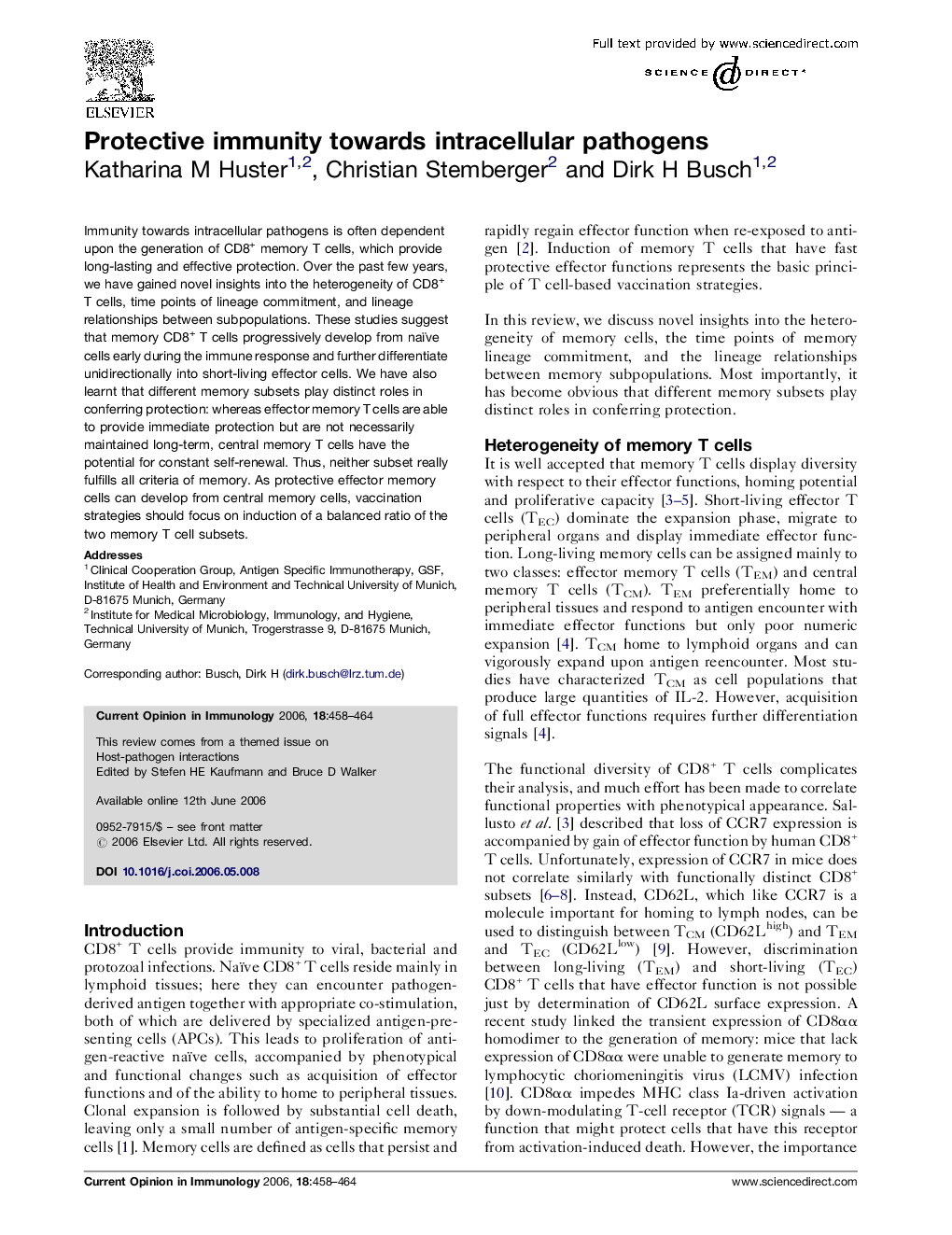| Article ID | Journal | Published Year | Pages | File Type |
|---|---|---|---|---|
| 3346716 | Current Opinion in Immunology | 2006 | 7 Pages |
Abstract
Immunity towards intracellular pathogens is often dependent upon the generation of CD8+ memory T cells, which provide long-lasting and effective protection. Over the past few years, we have gained novel insights into the heterogeneity of CD8+ T cells, time points of lineage commitment, and lineage relationships between subpopulations. These studies suggest that memory CD8+ T cells progressively develop from naïve cells early during the immune response and further differentiate unidirectionally into short-living effector cells. We have also learnt that different memory subsets play distinct roles in conferring protection: whereas effector memory T cells are able to provide immediate protection but are not necessarily maintained long-term, central memory T cells have the potential for constant self-renewal. Thus, neither subset really fulfills all criteria of memory. As protective effector memory cells can develop from central memory cells, vaccination strategies should focus on induction of a balanced ratio of the two memory T cell subsets.
Related Topics
Life Sciences
Immunology and Microbiology
Immunology
Authors
Katharina M Huster, Christian Stemberger, Dirk H Busch,
